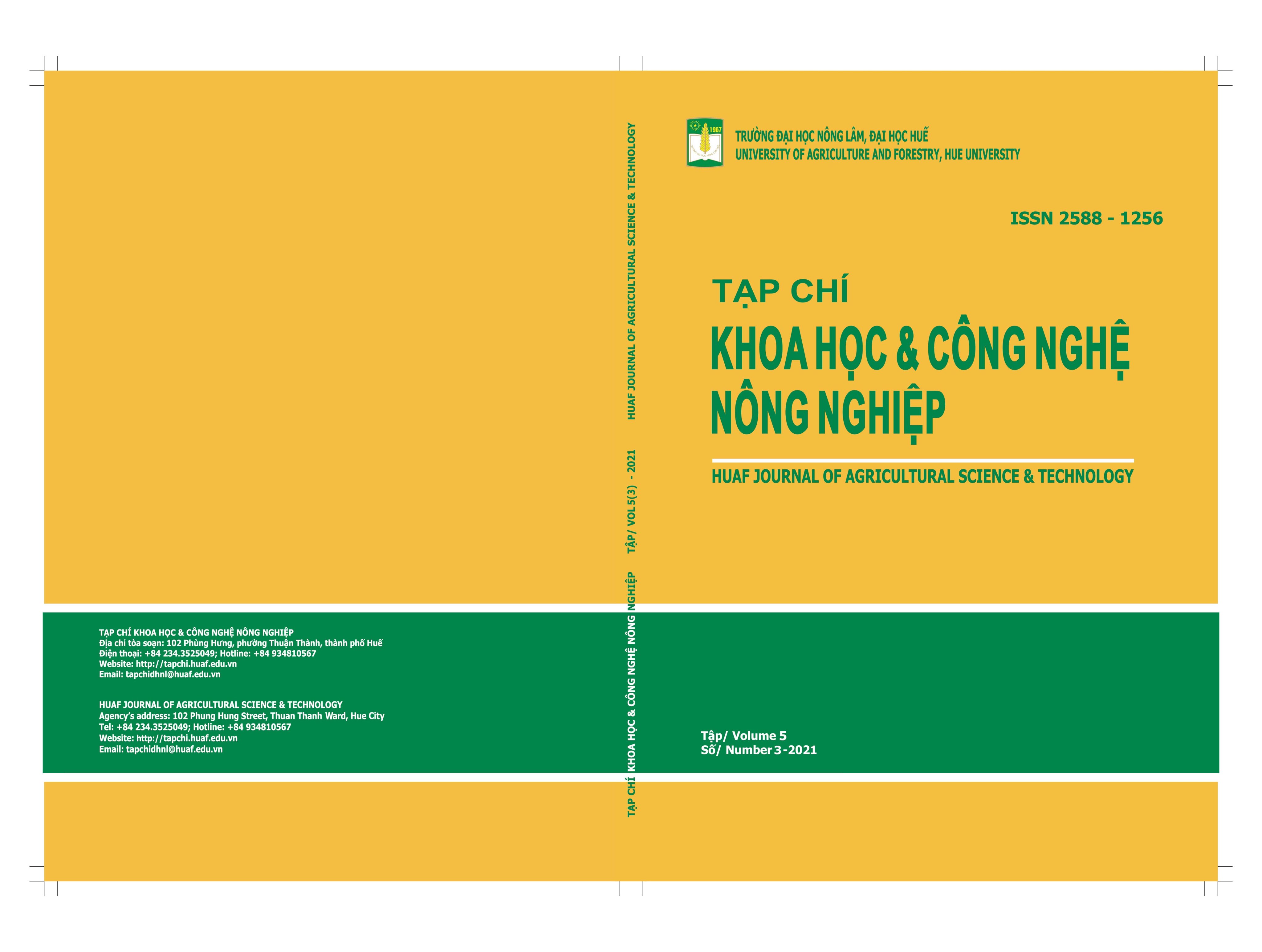##plugins.themes.huaf_theme.article.main##
Abstract
Nhằm xác định ảnh hưởng của mật độ và tần suất cho ăn đến sinh trưởng và tỉ lệ sống cá Leo Wallago attu giai đoạn ương giống, thí nghiệm được tiến hành với 5 mức mật độ (1, 2, 4, 8 và 16 con/L) và các tần suất cho ăn (1, 2, 3, 4 và 5 lần/ngày). Kết quả nghiên cứu cho thấy mật độ ương và tần suất cho ăn đã ảnh hưởng có ý nghĩa thống kê đến tỉ lệ sống của cá thí nghiệm. Tỉ lệ sống của cá giảm ở mật độ ương nuôi cao (p<0,05). Tỉ lệ ăn thịt đồng loại giảm ở các nghiệm thức mật độ nuôi thấp. Tần suất cho cá ăn có tương quan thuận với tỉ lệ sống, tỉ lệ sống của cá tăng trên 50% khi tăng số lần cho ăn lên 3 – 5 ngày/lần. Tỉ lệ ăn thịt đồng loại của cá có mối tương quan nghịch với tần suất cho ăn. Nồng độ cortisol trong máu cá được xem như chỉ thị đối với mức độ stress của cá. Kết quả của nghiên cứu này cho thấy rằng nồng độ cortisol của cá Leo ở mật độ nuôi cao và tần suất cho ăn 1 và 2 lần/ngày cao hơn so với những nghiệm thức còn lại. Do vậy, mức độ stress của cá Leo có thể được xem như một trong những yếu tố chính dẫn đến hiện tượng ăn thịt lẫn nhau và làm giảm tỉ lệ sống đối với loài cá này ở giai đoạn giống. Những kết quả của nghiên cứu này có thể cung cấp thông tin hữu ích nhằm nâng cao hiệu quả của việc ương nuôi cá Leo giống thông qua quản lý mật độ nuôi và tần suất cho ăn.
ABSTRACT
In order to elucidate the effects of stocking density and feeding frequency on the growth and survival of Wallago attu, post-hatch larvae were stocked at different densities (1, 2, 4, 8 and 16 individuals per liter) and fed with (1, 2, 3, 4 and 5-times per day). The results indicate that stocking density and feeding frequency had significant influences on the survival rate of the larvae (p<0.05). In particular, the survival rate of larvae decreased at trials with high stocking density (p<0.05) due to the cannibalism. The percentage of cannibalism decreased in treatments with low stocking densities. Regarding effects of feeding frequency, the proportionality between the survival rate of larvae and high feeding frequency was observed in this study (p<0.05). The survival rate of larvae reached 50% when fish were fed 3 -5 times per day. The cannibalism had negative relationship with frequency of daily feeding. The cortisol concentration in fish blood is considered as an indicator of stress levels of fish. The results of this study indicated that cortisol concentration of W. attu reared at high stocking density and fed 1-2 times/day was higher than that in other treatments. Therefore, stress levels of W. attu could be one of the main factors causing cannibalism and reduction of survival rate at larval stages. This study provided useful information to enhance the effectiveness of larval rearing of W. attu via controlling stocking density and feeding frequency.

